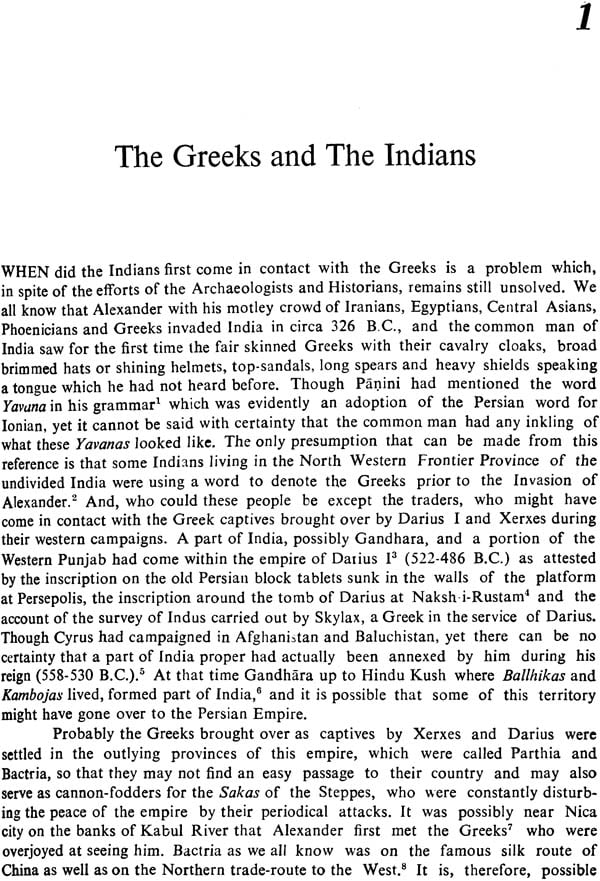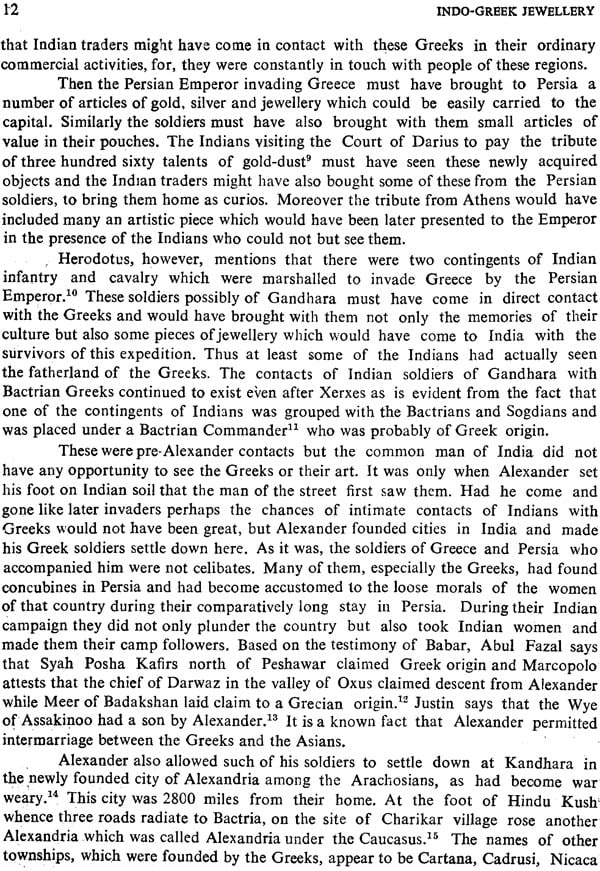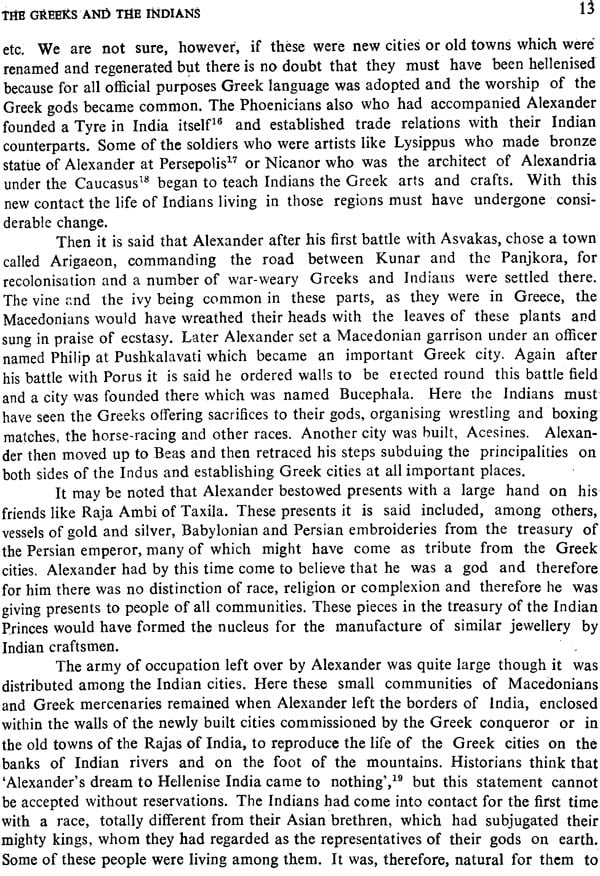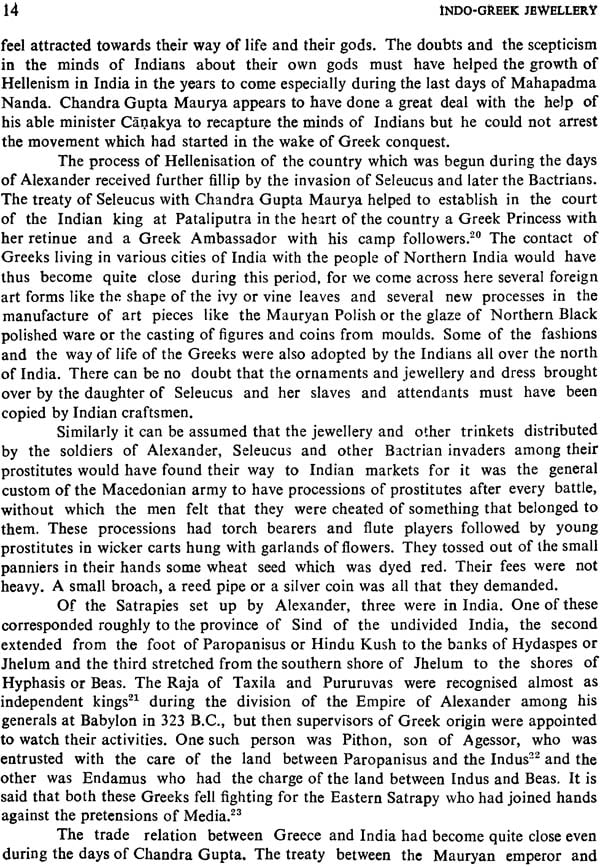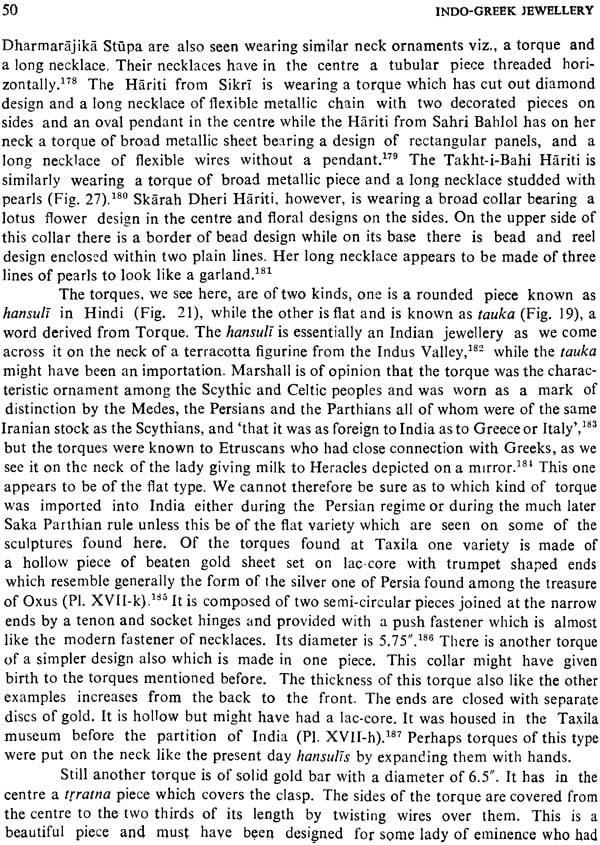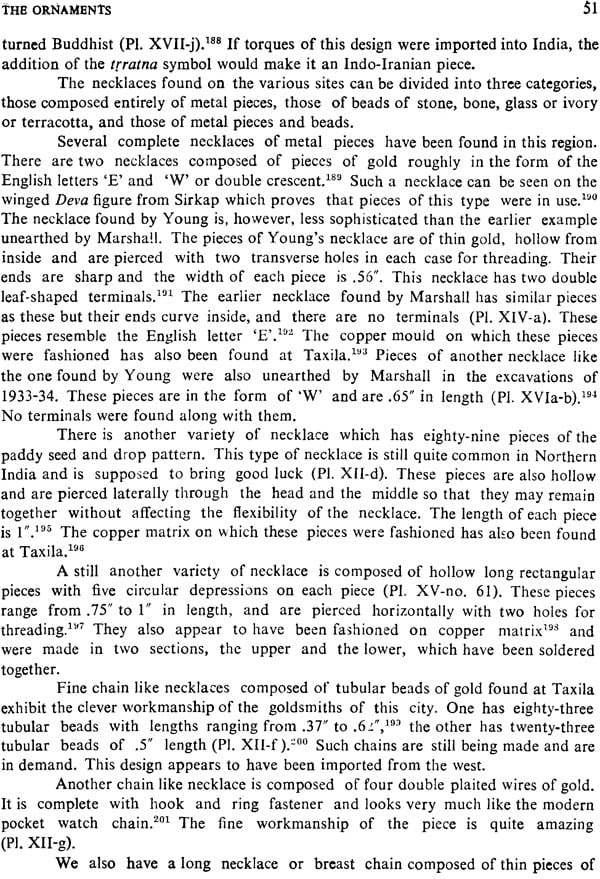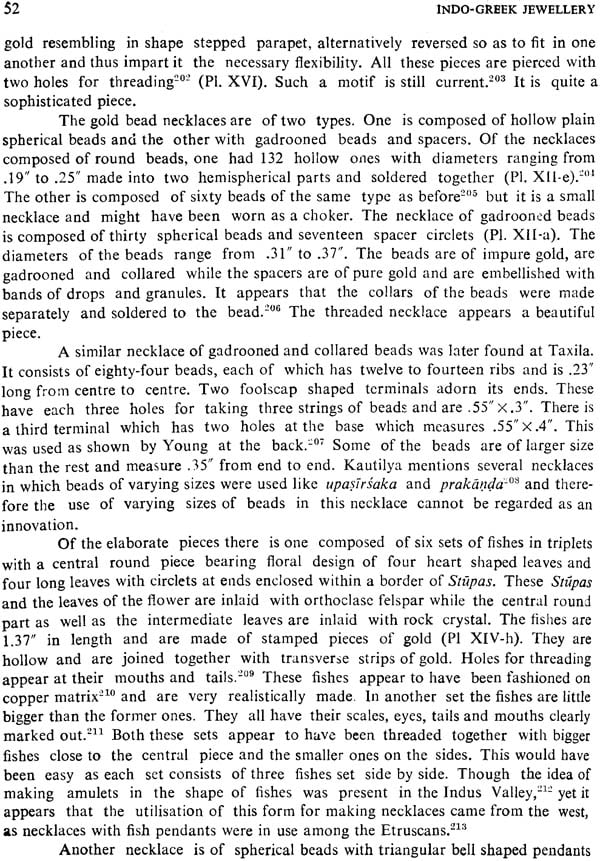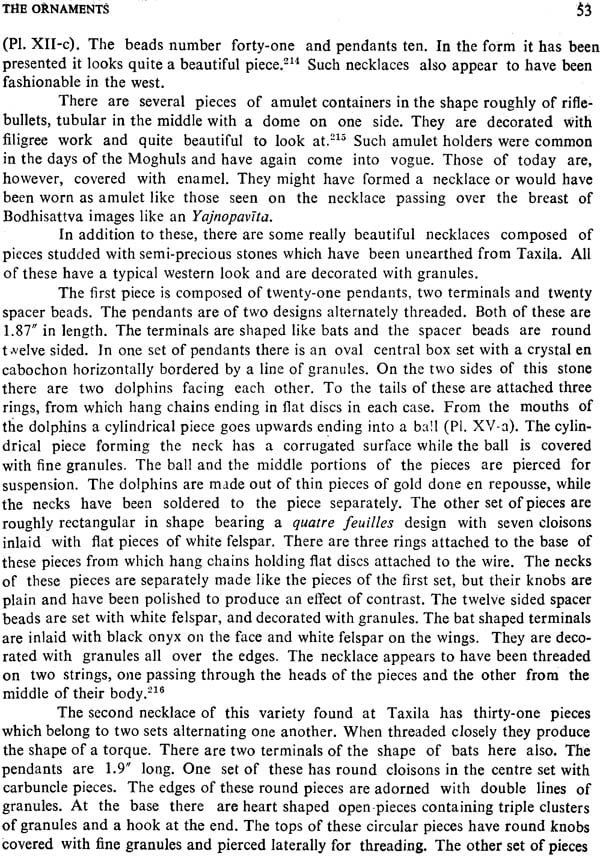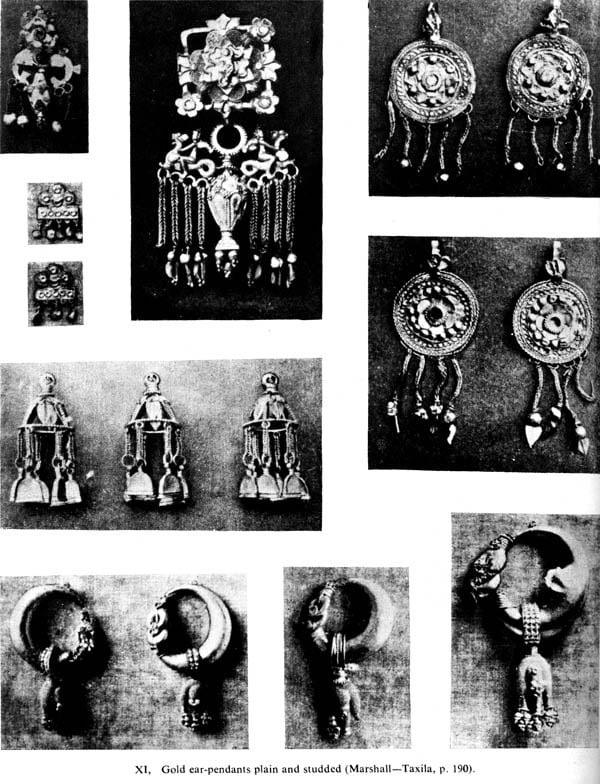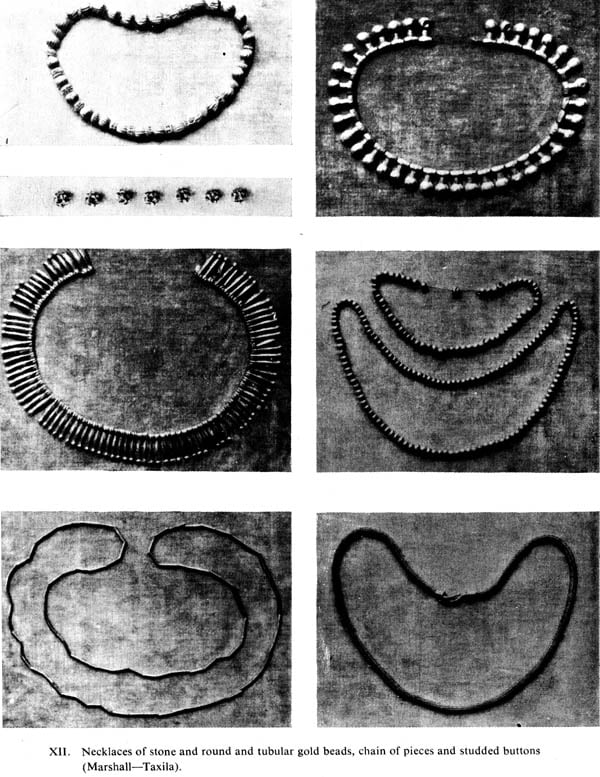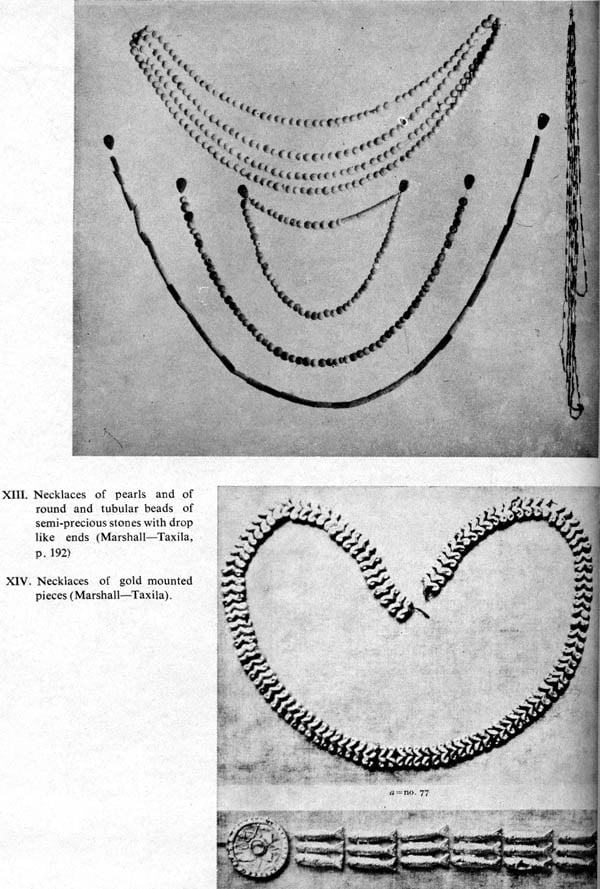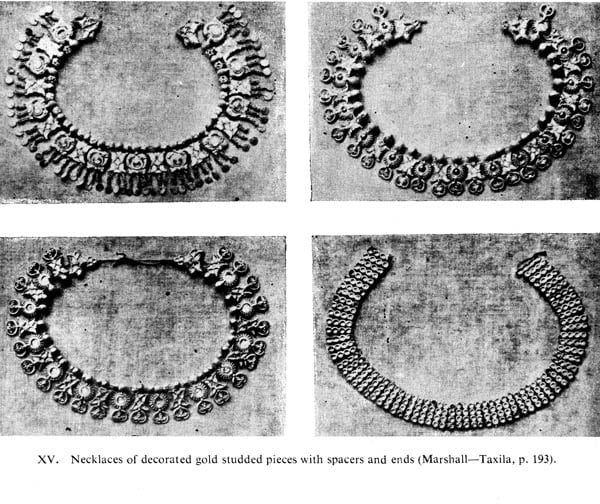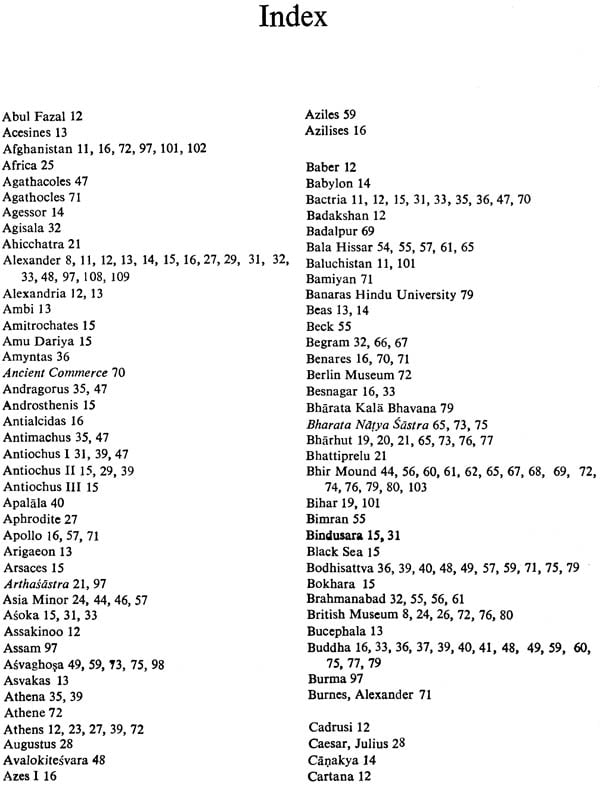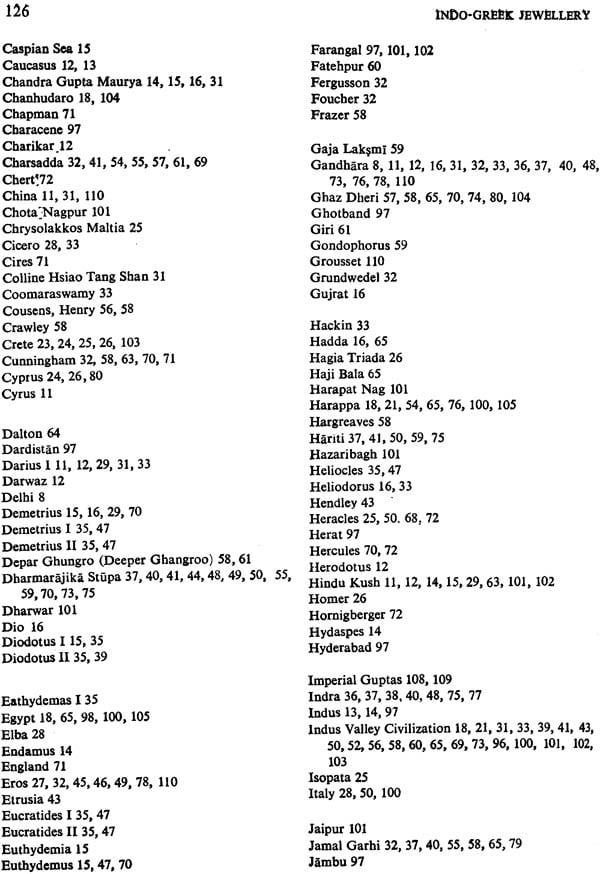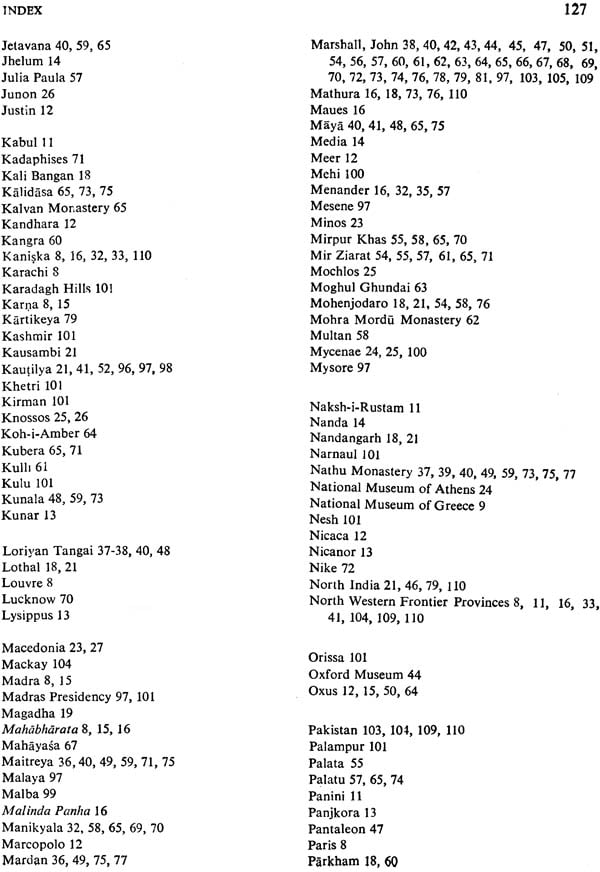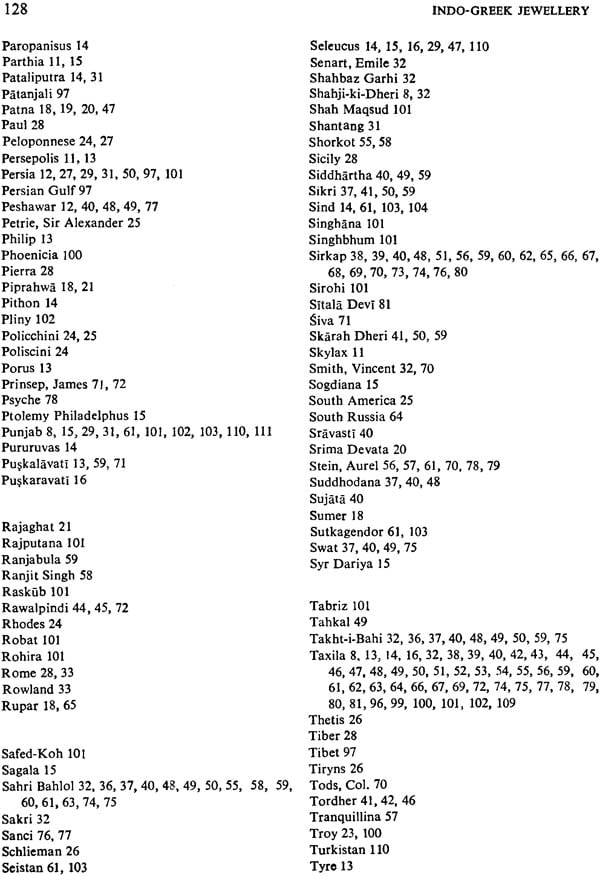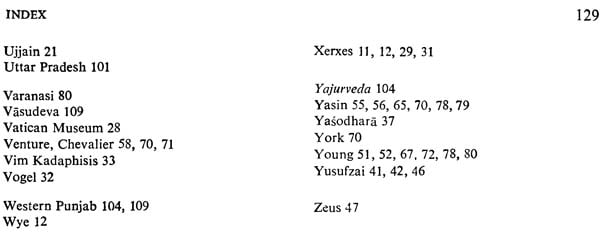
INDO-GREEK JEWELLERY
Book Specification
| Item Code: | IDG503 |
| Author: | RAI GOVIND CHANDRA |
| Publisher: | ABHINAV PUBLICATION |
| Language: | English |
| Edition: | 1979 |
| ISBN: | 8170170885 |
| Pages: | 136 |
| Cover: | Hardcover |
| Other Details | 9.8" X 7.5" |
| Weight | 560 gm |
Book Description
About the Book :
In this monograph the writer had tired to show how the Greek jewellery motifs were imported into India which have been discovered in the jewellery found in Taxila and other border towns where Alexander had allowed his soldiers to settle down. Among these soldiers were goldsmiths who just manufactured jewellery on Greek patterns but later influenced by Indian motifs began to mix these with Greek ones. This Indo-Greek jewellery found a ready market among the indo-Greeks who inhabited these towns. The writer had dealt with the jewellery found under different chapters entitled the jewellery for the head, ears, neck, arms, wrist etc. This analytical thesis is of interest to all Indologists and is especially useful for scholars studying Indian jewellery and ornaments of the first century A.D.
About the Author
Dr. Rai Govind Chandra (born on 19th November, 1906, at Varanasi City) was educated at Harishchandra High School along with Sri Lal Bhadur Shastri, Prime Minister of India, and Sri Tribhuvan Narian Singh, Chief Minister of U.P. and then at the Benares Hindu University from where he obtained his M.A. Degree in 1932. In 1955 he obtained his Doctorate form the University of Paris. His other works include the following: The Structure of Comedy, Sri Mukul Dey's Art, Avanindra Nath Tagore, The Development of Ornaments and Jewellery in Proto-Historic India, Vidika Kala ke Bharatiya Abhushana (Ornaments and jewellery in Vedic Age), Prachina Bharata Men Laksmi ki Pratima (Iconography of Laksmi), Hanumana (Development of the Iconography and the God-head of Hanumana), Terracottas of the Indus Valley Civilisation etc. He was Treasurer of the B.H.U from 1934-45, M.L.C., U.P., 1936-37, M.L.A. 1937-45, Lecturer in Harishchandra Degree College 1956-60, Principal 1960-64, Treasurer, Sanskrit University 1960-69, Vice-Chancellor 1970-71, Member de la Societe Asiatique, Member, Numismatic Society of India.
THE study of forms and ornamentation of jewellery of a period does not only disclose man's curious fascination for the unusual, the rare, the shining, the colourful metals, stones and other materials, but also helps us to understand the beliefs, the customs, the economic condition, the set-up of the society and its contacts with foreign lands. Thus such a study opens up the book of life of a particular period. A study of this kind is therefore not an account of the superficial tendencies of man. Neither is it a record of man's luxurious habits.
Often has the jewellery-making been dubbed as a minor art, but the painstaking minute work done by the craftsmen and the creation of the various forms by the artists is no mean work. It is a product of imagination and an effort to reproduce ideas in tangible forms. A piece of jewellery is, therefore, in no wayan inferior art production than a piece of sculpture.
Then, jewellery records the changing fashions more surely than any other branch of art. In spite of the dictum that a thing of beauty is a joy for ever, man soon loses interest in what he possesses, and wishes to acquire what he has not. It is ingrained in his nature. Sometimes when he sees others wearing a new type of dress or ornament he wants to have a similar apparel, and gets it if his pocket permits. After some time his attraction for it wanes. Thus new fashions continually come into being. Such changes are more frequent in ornament and dress than in anything else, with the result that a study of the forms and decorations of these can lead us to establish a sequence. The sudden appearance of new fashions or motifs of jewellery at once points to contact with foreigners which helps us to determine the history of that society.
Forms and ornamentation of pottery which have been the basis of determining the periods of archaeological strata do not record periodic changes as quickly as ornaments and jewellery, because the poor potter does not come into contact with the sophisticated persons or with the foreigners, as much as the goldsmith whose clientele consists of the rich. Such well-to-do people are ever eager to adopt new forms of dress and jewellery. A patent example of this desire can be seen among the rich millionaires of America who are adopting today the exotic forms of African aborigines for the articles of their daily use.
In this work an attempt is being made to disentangle the Hellenic Greek and the Indian forms of jewellery and to study the various forms which developed out of the contact of these two great peoples of ancient heritages who had both received and absorbed Achemenid impulses. The love of the Indian for ornament is proverbial, and therefore this was the most fertile field where ideas of these two peoples the Greeks and the Indians could mingle and take a new form.
In this study apart from examining the jewellery subjectively, an effort is being made to correlate the actual pieces found during the various excavations and explorations with those seen on the Gandhara sculptures. Among the jewellery found some pieces appear to be importations from the west which were brought by the soldiers along with them, but a number of others have been manufactured in India either by the Greek craftsmen settled in the towns founded by Alexander and his successors including the Bactrians or by the Indian craftsmen trained by the Greeks.
The new way of life which was being adopted by the Indians of Punjab and the North Western Frontier Provinces after the appearance of the Greeks on the Indian scene is more than amply portrayed on the Gandhara sculptures and can also be seen in the dialogue between Karna and Madra in the Karna Parva of Mahabharata. This new western mode of life necessitated the adoption of the Greek dress and ornaments which were manufactured by the craftsmen of the conquering nation. Soon however there was a mixture of Indian and Greco-Iranian motifs, for the Indian craftsmen copying the Greek models little understood their significance or background. This mixture of the two motifs produced a completely new art which we know today by the name of Gandhara art.
The contribution of the Sakas and the Kushanas towards the development of this art seems to have been negligible as pressed by the Hunas, they were more interested during this period to find a safe place to live rather than devote themselves to the cultivation of fine arts. They however appear to have given protection to the craftsmen who were living in their towns and took work from them. The workmanship of the relic casket of Kaniska found at Shahji-ki-Dheri is an example which proves how unrefined originally the Kushana work was. The figures en repousse on this casket are uncouth and out of proportion unlike some of the sculptures of Gandhara art. An artist working for the king would not have dared to produce such a piece if his patron was a man of taste and culture.
The problems which have arisen in this study are-(l) can the pieces of jewellery found indicate the introduction of new motifs and new techniques of manufacturing them, (2) is there any contribution of the Hellenic and Hellenistic Greeks towards the introduction of these new motifs and techniques, (3) does the deve- lopment of the motifs and techniques later indicate a mixing of Indian and Greek ideas and the result thereof and (4) does a study of these ornaments help us to understand the social set-up of the times? An attempt is being made here to solve these problems. This work was started in 1952 and photographs of the ornaments found at Taxila were collected. At that time they were available in Delhi. Later I got an opportu- nity to visit Karachi and examine some of these pieces physically. I had also occasion to visit the Vatican and British Museums where the Greek ornaments are housed which were very kindly made available to me. Later during my long stay in Paris I thoroughly examined the Greek ornaments in the Louvre. Unfortunately I have not been able to see the ornaments of the National Museum of Greece in spite of my efforts.
I express my gratefulness to all those, including the Directors of these museums, who have helped me in this work. I am especially obliged to my daughter- in-law, Rani Anjana Devi, who has prepared the drawings for this work and to Mr. B.D. Shah who has typed the manuscript. To my- publishers, I am thankful for bringing out this work in this shape.
| Preface | 7 |
| 1. The Greeks and the Indians | 11 |
| 2. Indian Jewellery Prior to the Advent of the Greeks | 18 |
| 3. The Greek Jewellery | 23 |
| 4. Indo- Greek Jewellery | 31 |
| 5. The Ornaments (A) Head Ornaments (B) Ear Ornaments (C) Neck Ornaments (D) Wrist and Arm Ornaments (E) Finger-Rings and Ring-Stones (F) Girdles and Belts (G) Foot and Other Oranaments | 35-94 35 39 47 58 65 73 76 |
| 6. Manufacturing Processes | 95 |
| Conclusion | 108 |
| Appendix I | 112 |
| Appendix II | 115 |
| Selected Bibliography | 119 |
| Index | 125 |
| Figures (1-41) | 133 |
| Plates (I-XXV) | 135 |
